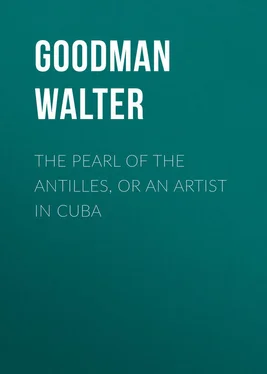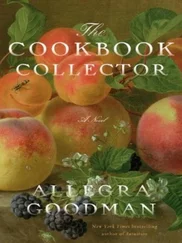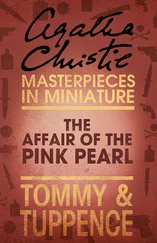Walter Goodman - The Pearl of the Antilles, or An Artist in Cuba
Здесь есть возможность читать онлайн «Walter Goodman - The Pearl of the Antilles, or An Artist in Cuba» — ознакомительный отрывок электронной книги совершенно бесплатно, а после прочтения отрывка купить полную версию. В некоторых случаях можно слушать аудио, скачать через торрент в формате fb2 и присутствует краткое содержание. Жанр: foreign_antique, foreign_prose, Путешествия и география, на английском языке. Описание произведения, (предисловие) а так же отзывы посетителей доступны на портале библиотеки ЛибКат.
- Название:The Pearl of the Antilles, or An Artist in Cuba
- Автор:
- Жанр:
- Год:неизвестен
- ISBN:нет данных
- Рейтинг книги:4 / 5. Голосов: 1
-
Избранное:Добавить в избранное
- Отзывы:
-
Ваша оценка:
- 80
- 1
- 2
- 3
- 4
- 5
The Pearl of the Antilles, or An Artist in Cuba: краткое содержание, описание и аннотация
Предлагаем к чтению аннотацию, описание, краткое содержание или предисловие (зависит от того, что написал сам автор книги «The Pearl of the Antilles, or An Artist in Cuba»). Если вы не нашли необходимую информацию о книге — напишите в комментариях, мы постараемся отыскать её.
The Pearl of the Antilles, or An Artist in Cuba — читать онлайн ознакомительный отрывок
Ниже представлен текст книги, разбитый по страницам. Система сохранения места последней прочитанной страницы, позволяет с удобством читать онлайн бесплатно книгу «The Pearl of the Antilles, or An Artist in Cuba», без необходимости каждый раз заново искать на чём Вы остановились. Поставьте закладку, и сможете в любой момент перейти на страницу, на которой закончили чтение.
Интервал:
Закладка:
In fine weather my slumbers at night are uninterrupted, but when it rains – and in Cuba it never rains but it pours in bucketfuls – my rest is at intervals sorely disturbed. I dream that a thousand belligerent cats are at civil war on the Roman-tiled roof above me, and that for some unknown reason I alone expiate their bloodthirsty crimes, by enduring a horrible penance, which consists in the historical torture of a slow and perpetual stream of liquid which dribbles upon my bare cranium. I awake suddenly to find that my nightmare has not been unfounded. Something damp, proceeding from the sloping roof, drops at regular intervals upon my forehead. By the light of the patron saint who watches over me I perceive that the rain has found an inlet through a gotera in the roof. A gotera is a hole in the tiles, formed during the day by the action of the baking sun upon the mortar, which yields to its cracking influence and leaves an aperture. Rising hurriedly in the dead of night, I remove my catre to a dry corner, and at the same time place a basin beneath the spot from whence the drops of rain issue. Once more I awake under the same moistening influence. A fresh gotera has arisen over my dry place of repose. Again I shift my ground, and use an empty pail for the accommodation of the intrusive element; but fresh goteras appear wherever I pitch my catre, until, having circumnavigated all the safe coasts of my tempestuous apartment and exhausted every receptacle for water, I take up my bed and deposit it in an adjoining chamber, which happening to be unoccupied and free from goteras, allows my slumbers to remain undisturbed till morning.
Don Benigno's family take what we should call breakfast, but which they term 'tienta pie,' in their respective sleeping chambers. At six A.M. a dark domestic enters my dormitory with a cup of black coffee and a cigarette. Later, this is followed by a larger cup of milk qualified with coffee, or, if I prefer chocolate, the latter in an extraordinary thick form is brought. The beverage is accompanied by a Cuban bun or a milk roll with foreign butter: for as the native cow does not supply the material for that luxury, the butter used in Cuba is all imported in bottles like preserves.
Eleven o'clock is the hour appointed for breakfast. This is a substantial meal and appears to be breakfast, dinner, and supper rolled into one. Every item of food is served as a separate course, of which there are more than fourteen different 'fuentes,' or dishes, on the table. A plate of eggs and sliced bananas fried in butter constitutes the first course. A second course is represented by a dish containing a combination of boiled rice and dried cod-fish, or 'bacalao,' with tomato sauce. 'Serence,' with 'congri,' is a Creole dish composed of Indian corn, rice, and red beans, and forms course number three. Sambumbia, anis, and chimbombó, are native vegetables prepared in a variety of palatable ways. An olla podrida of sweet yams, pumpkins, white beans, bacon, sausage, and cabbage is another favourite dish; and, lastly, fish, flesh, and fowl in a dozen different guises complete the bill of fare. This sumptuous repast having been washed down with Catalan claret, some West Indian fruits and solid-looking preserves are partaken of, and the indispensable cigar or cigarette and wholesome café noir are handed round.
Breakfast over, the Don's family disperse, each to his or her occupation. The children retire to their schoolroom, where the different masters (for in Cuba there are no 'out-door' governesses) engaged for their instruction arrive at their prescribed hours, give their lessons, and depart. A master is provided for every branch of learning and for teaching every art except that of dancing, this accomplishment being naturally and easily acquired by the graceful little ladies and gentlemen themselves.
Don Benigno retreats, after breakfast, to his office, where he transacts his business affairs, which seem to consist chiefly in lolling in an easy chair with a long cigar between his lips, while he watches his escribano, or clerk, as that functionary makes up accounts and writes letters.
As for the Don's lady, Doña Mercedes, she may be described broadly as a sleeping partner, her department in the firm being literally the sleeping department. After disposing of her housekeeping duties, which are briefly accomplished by handing the black cook a certain sum daily for marketing purposes, the worthy lady passes the rest of the day with a fan in a rocking chair, in which she sways and fans herself cool. Doña Mercedes has a youthful appearance from her neck upwards, but being somewhat corpulent, her figure scarcely corresponds with the attractions of her face. Being, however, attired in a loose linen gown which falls like a sack, ungirdled and uninterrupted, from her fair shoulders to her remarkably small shoes, the protuberances of her person escape notice, and, with her jet-black hair neatly and tastefully arranged, she may be said to represent an agreeable type of the Cuban matron.
It is often a matter for wonder with me, how Señora Mercedes and her friends contrive to keep their hair in such perfect order. Cuban ladies being gifted by nature with a wealth of hair require no artificial aid; but I am told that their heads being once 'dressed' for the day remain intact till night, a fact which I can easily credit, seeing that no ceole lady assumes either bonnet, hat, or other covering for the head, when she takes her walks abroad.
But Doña Mercedes is not always such a helpless member of society as I have represented her. She is possessed of a warm, generous nature, and this quality often prompts the good lady to perform many useful acts of kindness and charity to those who are in need of her benevolence.
Between one and three in the afternoon, Don Benigno and his family indulge in the wholesome luxury of a warm bath; for, despite the climate, a creole, when in town, rarely immerses his or her body in perfectly cold water. The water intended for bathing purposes is sometimes placed in the centre of the patio, or court-yard, where, under the powerful influence of the sun, it is soon warmed to any reasonable degree of temperature.
Ablutions over, the indispensable siesta is enjoyed by everybody, on catres or in hammocks; for the heat of mid-day is insupportable, and repose after a bath is considered salutary.
After the siesta, Doña Mercedes and her young daughters, accompanied by her adopted child – a girl of ten – do what the ladies of many other countries do late in the afternoon. They attire themselves fashionably and take a stroll in the Plaza or a drive in the Alameda, which is the Rotten Row of a Cuban town.
Whatever shopping Doña Mercedes contemplates is effected in the cool of the early morning after her devotions at the church, whither she repairs at the hour of six A.M. Church-going is a serious undertaking with the good lady. Firstly, she and her daughters must be becomingly attired, and on this occasion black lace veils are included in their toilettes. Besides prayer-books, rosaries, and fans, the devotees must be provided with small squares of carpet and toy-like chairs of papier maché inlaid with gold and pearl ornaments. These articles of furniture are conveyed to the sacred edifice by some young negress servants, for with the exception of a few wooden benches, a Cuban church offers no relief to the weary flesh.
Having entered the church, Doña Mercedes proceeds to moisten the tips of her ungloved fingers in some holy water from a font, and after duly crossing herself, extends her hand to her daughters, who touch it and thus partake of the blessed liquid. The black attendants then spread the fragments of carpet, place the chairs, and retire to a dark corner of the building. The ceremonies begin. Doña Mercedes and her daughters follow the ecclesiastic in their miniature prayer-books, and alternately kneel and cross themselves when required to do so; gaze with a devout expression at their favourite saint, and tell their beads; take a mental note of their neighbours' dresses, fan themselves, and exchange nods of recognition with acquaintances – till a little bell from one of the side-chapels tinkles for the final ceremony of elevating the host.
Читать дальшеИнтервал:
Закладка:
Похожие книги на «The Pearl of the Antilles, or An Artist in Cuba»
Представляем Вашему вниманию похожие книги на «The Pearl of the Antilles, or An Artist in Cuba» списком для выбора. Мы отобрали схожую по названию и смыслу литературу в надежде предоставить читателям больше вариантов отыскать новые, интересные, ещё непрочитанные произведения.
Обсуждение, отзывы о книге «The Pearl of the Antilles, or An Artist in Cuba» и просто собственные мнения читателей. Оставьте ваши комментарии, напишите, что Вы думаете о произведении, его смысле или главных героях. Укажите что конкретно понравилось, а что нет, и почему Вы так считаете.












